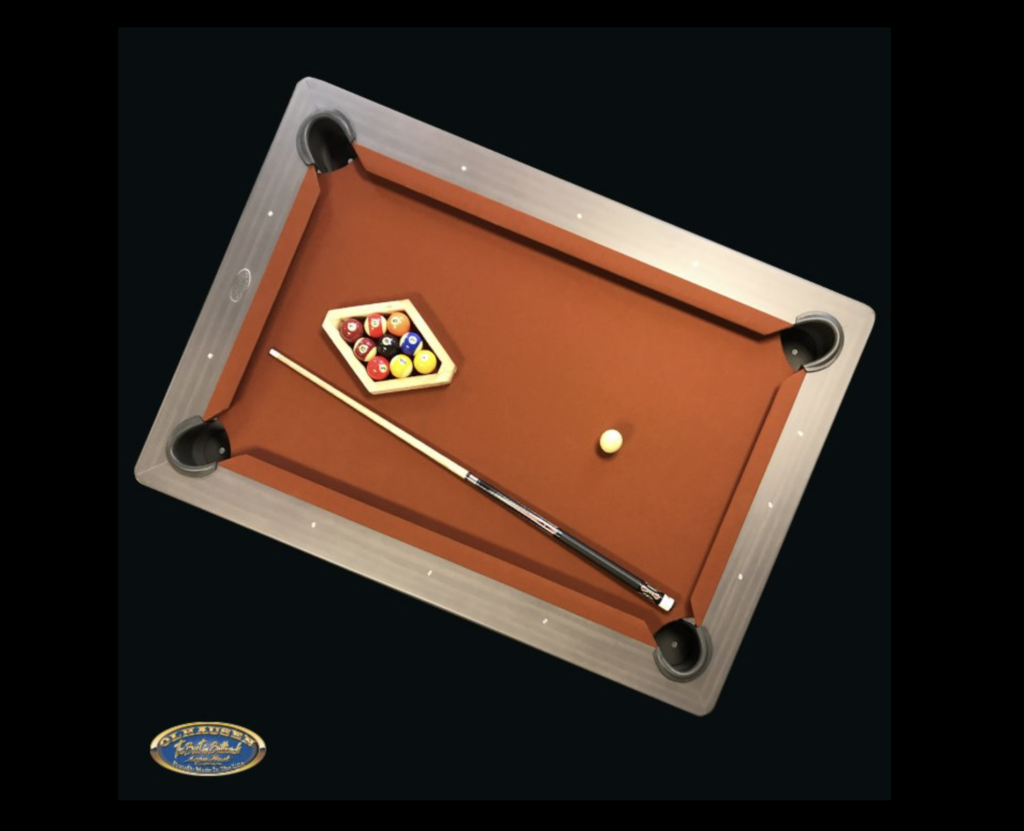 How to Play Bantam
How to Play Bantam
Families can now play pool on a quality table in a room in their home that was previously too small to be used for a pool table. The playability and overall quality of this table are maintained at a high level by utilizing pro quality components. A real slate bed, Accufast cushions by Olhausen, standard pool table pockets, and 2 1/4” balls all contribute to this play quality.
Suggested games and general rules for playing on the Bantam Table:
Because the ball diameter remains at 2 1/4”, like a standard pool table, there needs to be fewer of them on the smaller 29” by 50” playing area. Popular pool games like 9 ball and 7 ball can be enjoyed on this table by adults and more advanced younger players. Short rack 8 Ball, which is four stripes four solids and a black ball, can also be played. For a speedier game, Fast Rack 8 Ball, utilizing three stripes and three solids and a black ball can also be played. There is plenty of room on the Bantam table to play these games.
Children that are just learning to play pool can enjoy a game that we call 3 on 3. There are three yellow balls and 3 red balls none of which are numbered. A black ball, analogous to a puck or soccer ball, must be pocketed for a point or a win.
3 on 3 Rules
The three yellow balls and three red balls are racked up in the center of the table with the black ball in the middle. Players can toss a coin or defer the break to their opponent out of kindness. Breaking from behind the line, if the player makes a ball on the break, they can choose either color as theirs, and keep shooting. Failing to make a ball on the break gives the opponent their turn at the table, first shooting from where the balls lay.
Calling shots is unnecessary, but the player has to contact one of their colored balls first with the cue ball whenever they make a shot. If the player has contacted one of his balls first, anything that falls (in either pocket) entitles the shooter to keep going until they have pocketed all three of their colored balls, at which point they can shoot directly at the black ball.
Pocketing the black ball in either pocket at any time, as long as they have hit one of their balls first, or all their balls are pocketed, is considered a win. Lucky bounces do count!
As in all pool games, failing to contact one of your balls first with the cue ball, or Pocketing the cue ball, is a foul, which gives the opponent ball-in-hand.
Skill level game options are plentiful:
Obviously, the rotational rule requirements of standard 9 ball and 7 ball games, where the player must contact the lowest numbered ball on the table first with a cue ball, may be way too difficult for beginning players and children. We recommend starting with the three-on-three game or Fast Rack eight ball.
As the participants skill levels increase, subtle changes can be made to the three-on-three game, such as calling the black ball shot, or having to pocket all of your color balls into one pocket only.
• Playing 7 ball in rotation will be a big challenge to beginners but would become more fun as they improve their skill level.
• Advanced players can obviously raise the bar by calling every shot and by only counting balls that fall into one particular pocket.
• And of course, Advanced players can always play 9 ball or 7 ball using the standard BCA rules.



